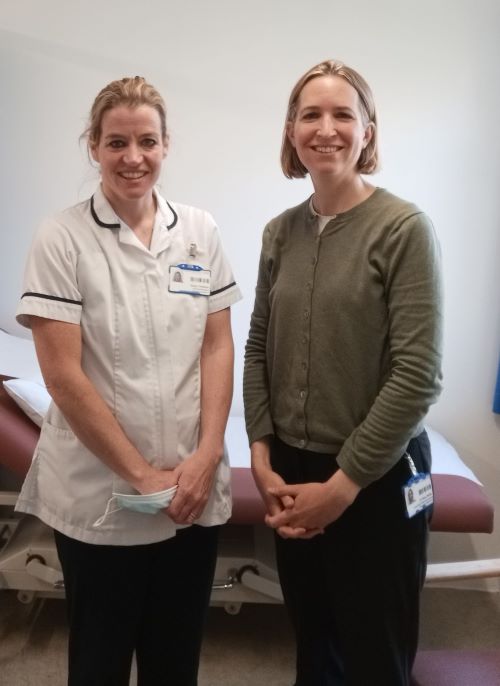Early detection, rapid diagnosis and timely review for axial SpA patients in Salford

Blog by Will Gregory, Consultant Physiotherapist and Clinical Governance Lead, Rheumatology Directorate, Salford Royal Hospital
1) Can you describe the project? What was the problem you wanted to solve and what was the objective?
When we joined the Aspiring to Excellence programme as a part of cohort two in June 2021 we had a three-part goal for our project. We aimed to (i) improve early detection, (ii) ensure rapid diagnosis and (iii) improve access and timely review for those under our care with a diagnosis of axial SpA.
2) What action you took to address the problem and what QI tactics did you use? Where did you start?
Our first area for focus was looking at how we could ensure rapid identification of those living with undiagnosed Axial SpA, this took the form of a patient survey examining our local delays to diagnosis.
The outputs of this survey allowed us to get a better understanding of where to focus our efforts both internally in our team and also with our colleagues who were referring into our rheumatology service. For example, we found that more than 50% of our patients surveyed had at least one appointment with a physiotherapist prior to their diagnosis; based on this we have actively sought out our community physiotherapy colleagues and delivered a number of educational sessions to improve awareness of the early signs and symptoms of axial SpA, and the local pathways to follow to get rapid access to our Rheumatology Clinics.
The QI methodology we have learnt on the Aspiring to Excellence programme has allowed us to undertake several test of change/plan-do-study-act cycle exercises to fine tune how we ensure the pathway for suspected axial SpA is rapid within our own service.
With regards to improved access and timely review for those already under our care with a diagnosis of axial SpA, we have undertaken another test of change. In this change cycle, we are exploring how electronic patient reported outcome measures (ePROMS) can allow remote monitoring and get rapid access to help when our Axial SpA patients report a flare in their condition. We had more than 100 of our axial SpA patients complete the online outcome measures during our trial late last year. For a few, who scored particularly highly, we brought forwards their appointments and offered an early review to consider both emergency treatment and changes to long-term medication plans.
3. What barriers (if any) did you face while working on your project?
We started the project with great ambitions and whilst we are a good way towards achieving them, the progress has been slower than we had anticipated. The pandemic resulted in many competing issues for our team. Short staffing in our bookings team continues to have an impact on our aspirational wait times.
The QI methodology we used was intentionally looking at a broad data set, getting access to all of the data we required has been slow; we have also found the vast amounts of data that have come out of our ePROMs trial difficult to process as the system doesn’t automatically link up with our computer records and needs manual review to assess the data and then place it into the correct part of our electronic notes.
4. Were there any light bulb moments? Or big wins?
The main light bulb moments have been related to us reviewing the processes we currently use and looking at the “small wins” we can make. There has been big benefit in reviewing our pathways with a fine-tooth comb and checking that all parts are working as quickly as they should. There has been a “marginal gains” build up from minor tweaks to our processes.
5. What was the result of your project? Is it still a work in progress or do you have outcomes you can share at this time?
We have been able to halve our wait times from GP referral to first appointment in rheumatology. We have a better access pathway for flare support and better ways for our patients to let us know when / if they are struggling.
The community clinician awareness project continues. It will be longer before we start to notice the benefits of earlier consideration of a potential axial SpA diagnosis among all Health Care Professionals in the community who might be seeing people with undiagnosed axial SpA.
Our figures for delay to diagnosis are good in Salford, but we are committed to making them even better and pushing towards the NASS Gold Standard. The QI knowledge and tools we now have and the time we have invested in our axial SpA service will pay off in the short and longer term in improving the outcomes for our axial SpA patients.
-
To learn more about QI methodologies watch our Aspiring to Excellence video series on YouTube
-
To find out about other projects to drive improvements in axial SpA diagnosis and care listen to our Rheum for Improvement podcast series.


